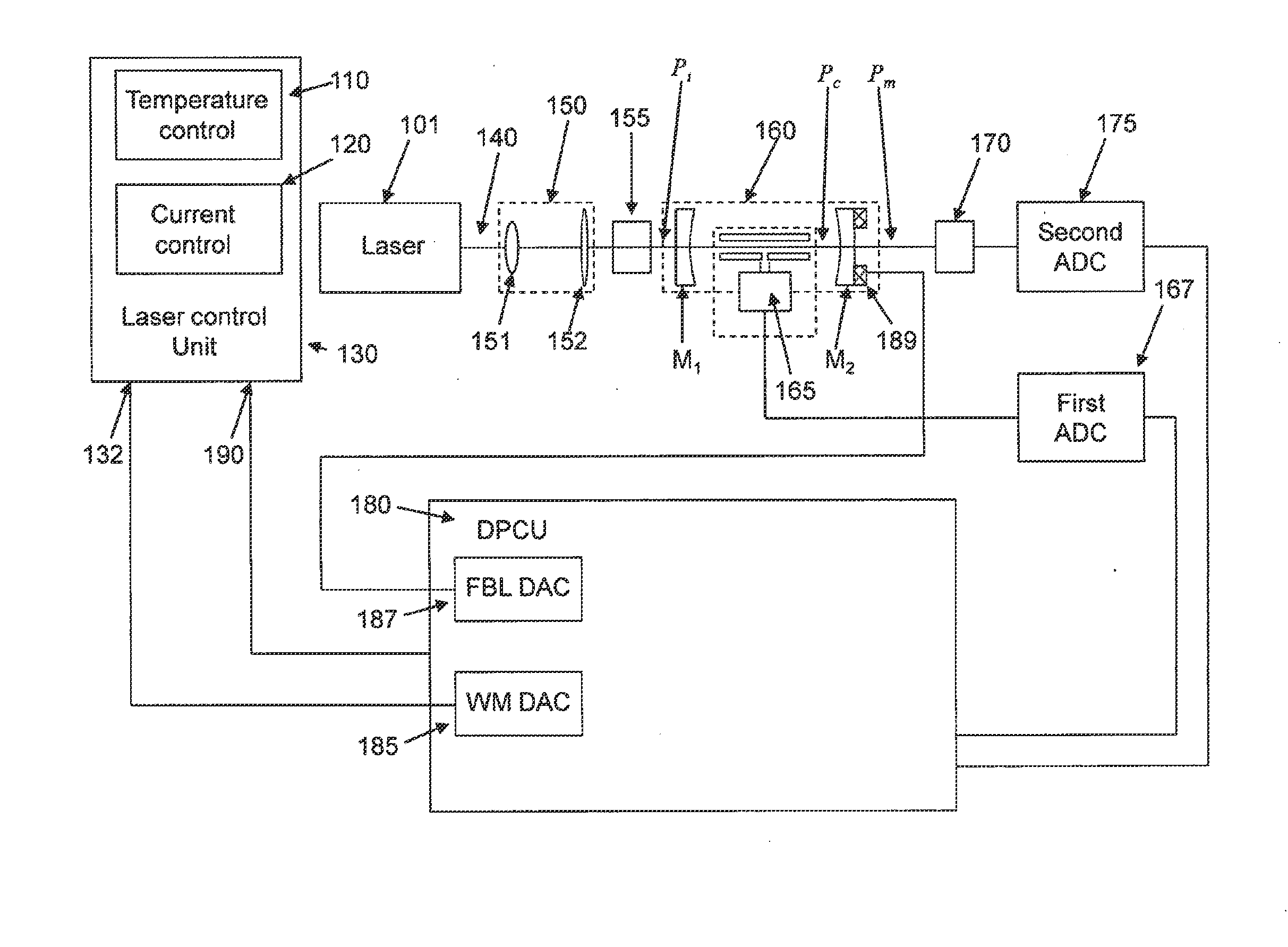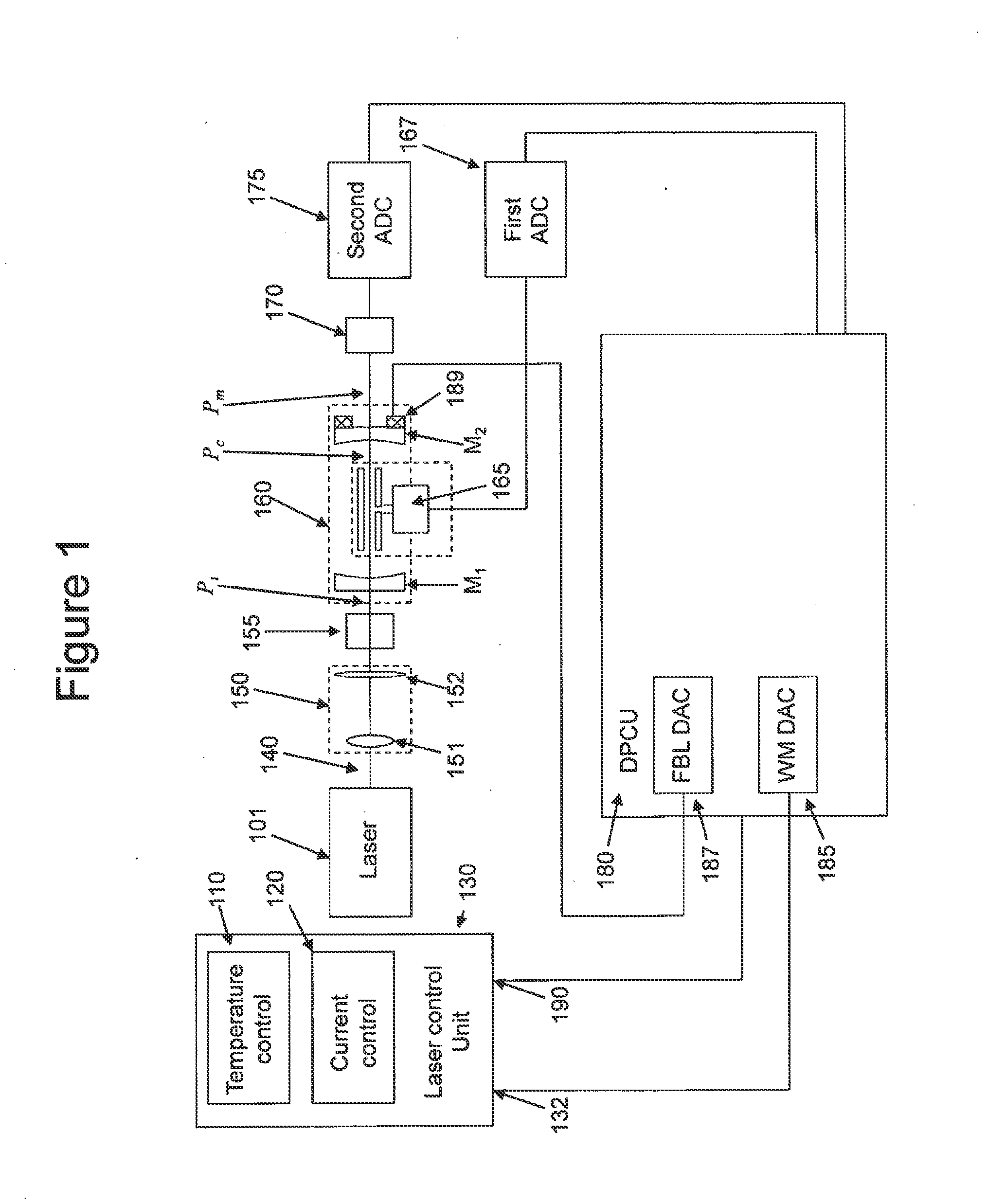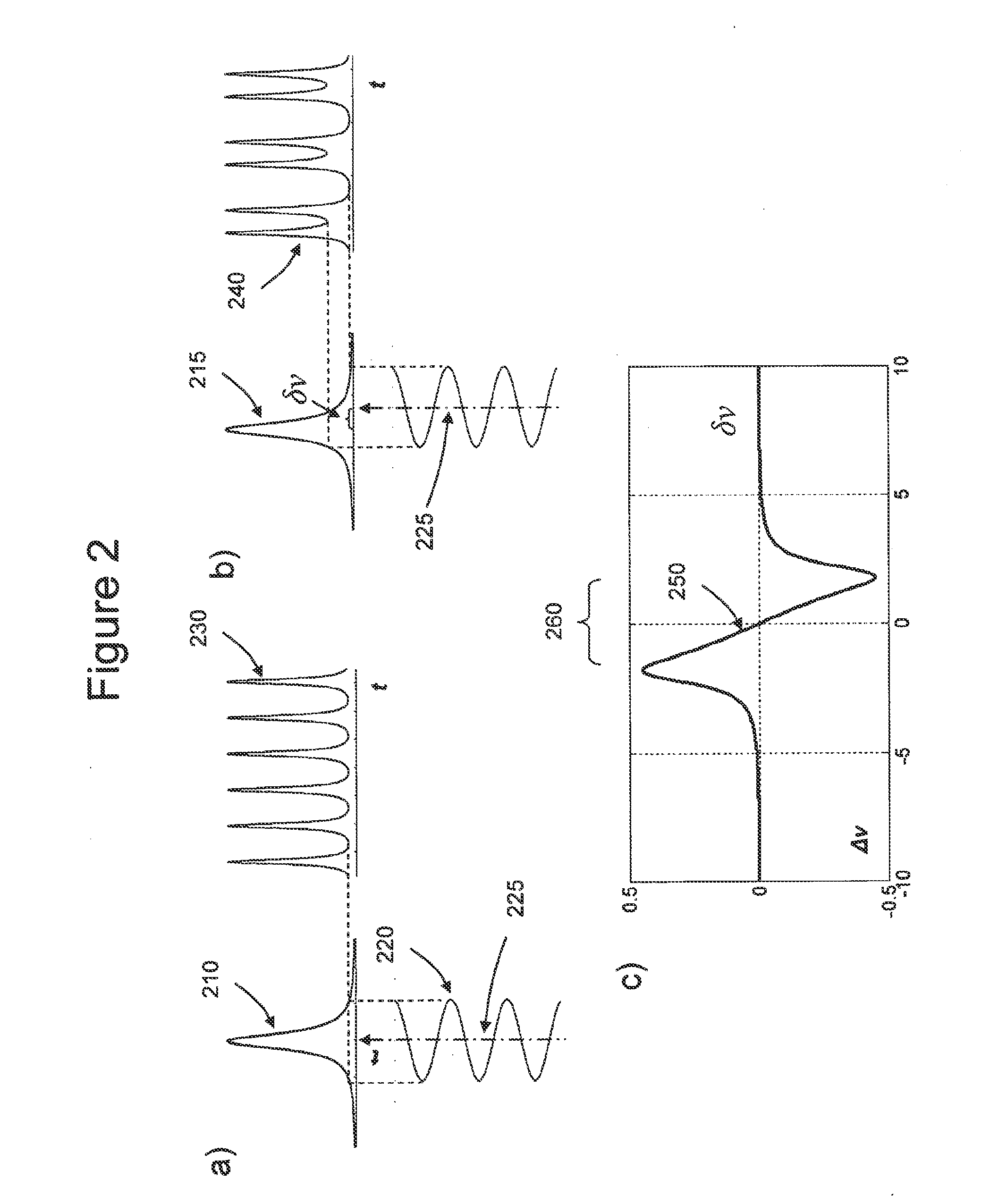Method and apparatus for locking a laser with a resonant cavity
a laser and cavity technology, applied in the field of ultrasensitive analysis of gaseous species, can solve the problems of low immunity, inability to find a single commercial gas detection product, and limited impact on the gas sensing industry, and achieve the effects of improving the sensitivity of the laser, improving the sensitivity, and low cos
- Summary
- Abstract
- Description
- Claims
- Application Information
AI Technical Summary
Benefits of technology
Problems solved by technology
Method used
Image
Examples
Embodiment Construction
[0044]We now provide a detailed description of the method of the invention and several embodiments of the apparatus applicable to the method.
[0045]A schematic diagram of the gas detection system of the present invention is shown in FIG. 1. The present invention in a preferred embodiment contains a semiconductor laser source 101, preferably a distributed feedback (DFB) laser emitting a single emission line that can be tuned in the vicinity of the absorption line of the analyte species of interest within a range of several wave numbers. The operating wavelength of the laser can be changed or modulated, for example, by changing the operating temperature of the semiconductor laser chip, and / or its drive current. This is accomplished by electronic modules known in the art such as a diode laser temperature controller 110 and / or a low noise diode laser current controller 120. In other embodiments the laser can be of other known type subject to the requirement that its wavelength of operati...
PUM
| Property | Measurement | Unit |
|---|---|---|
| absorption coefficient | aaaaa | aaaaa |
| volume | aaaaa | aaaaa |
| volume | aaaaa | aaaaa |
Abstract
Description
Claims
Application Information
 Login to View More
Login to View More - R&D
- Intellectual Property
- Life Sciences
- Materials
- Tech Scout
- Unparalleled Data Quality
- Higher Quality Content
- 60% Fewer Hallucinations
Browse by: Latest US Patents, China's latest patents, Technical Efficacy Thesaurus, Application Domain, Technology Topic, Popular Technical Reports.
© 2025 PatSnap. All rights reserved.Legal|Privacy policy|Modern Slavery Act Transparency Statement|Sitemap|About US| Contact US: help@patsnap.com



